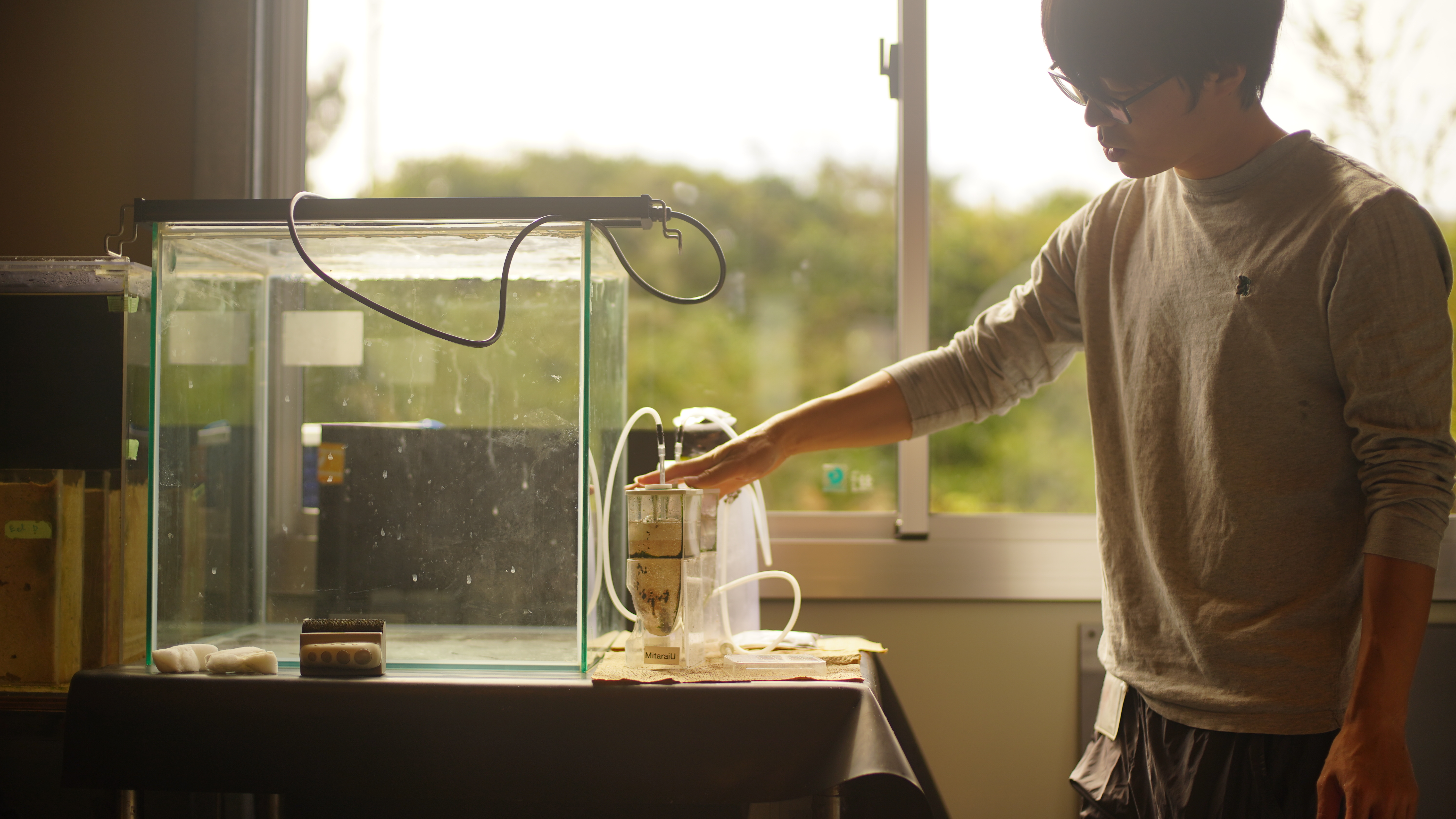Research
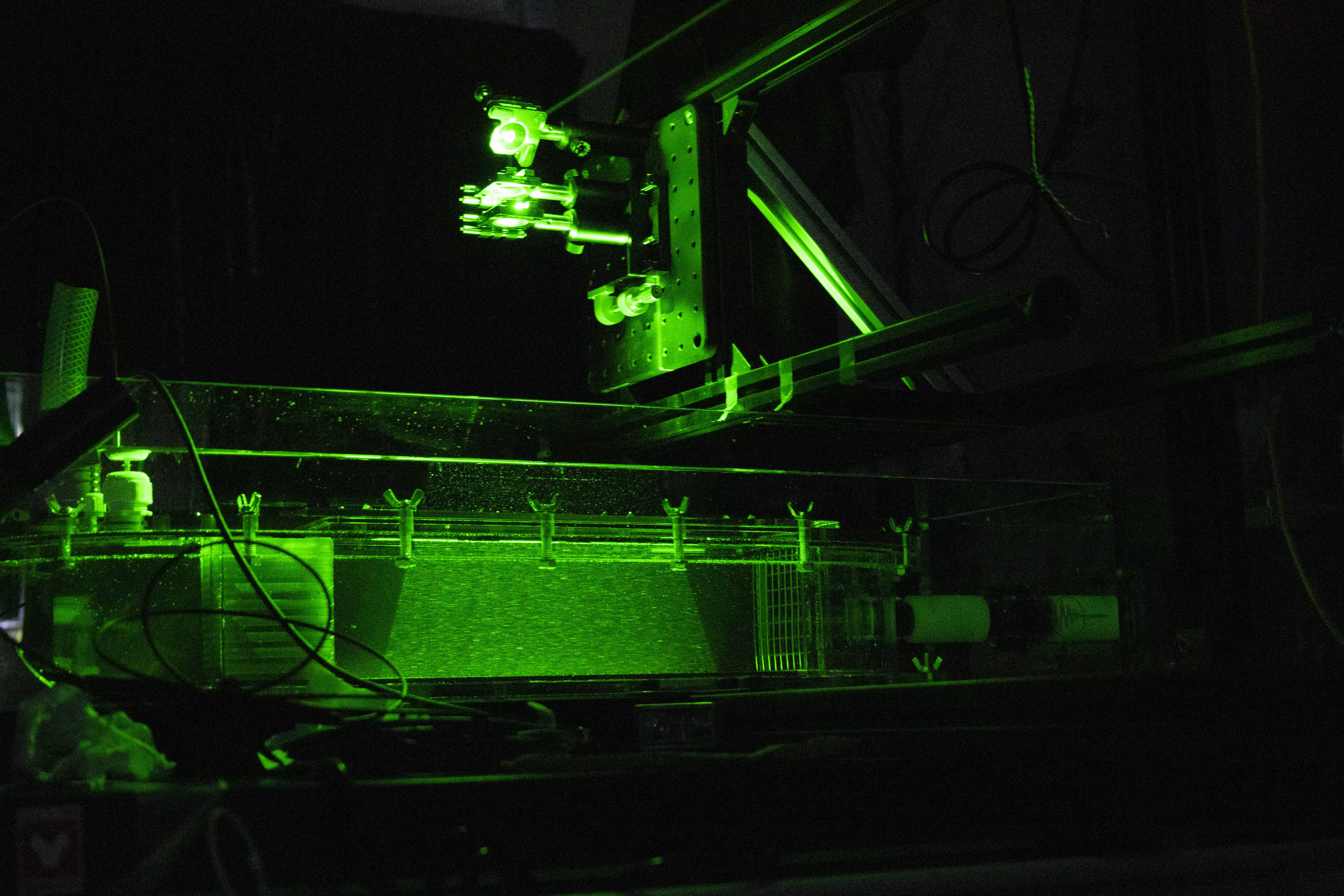
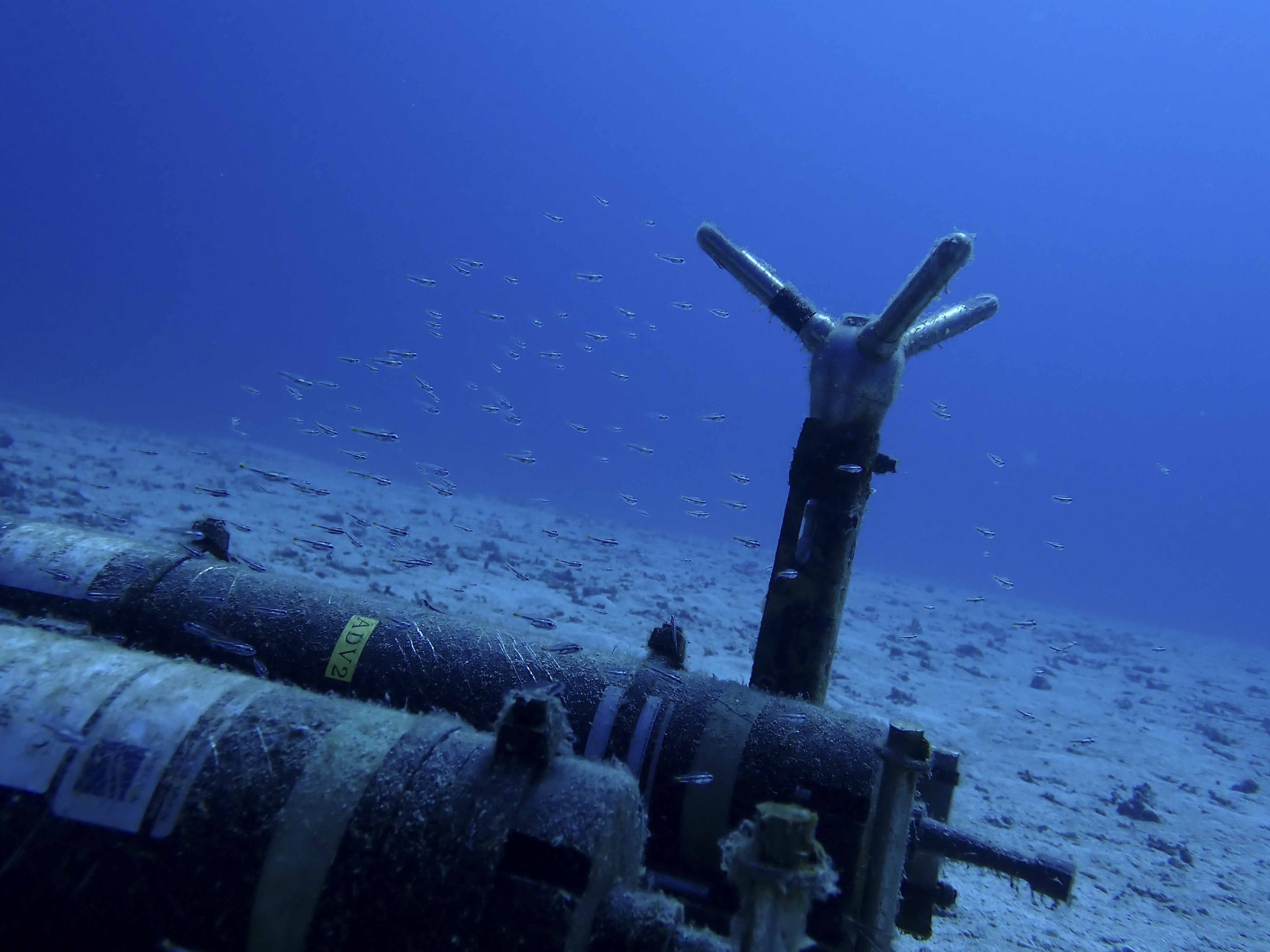

Skills and Techniques
The interdisciplinary research involves measurement and analysis of flows and animal behavior. Here, I'm introducing skills and techniques used in the study.
Flows
Particle image velocimetry (PIV)
By shining a laser sheet onto a fluid filled with particles, the movement of particles can be visualized. By capturing the particle movement with a high-speed camera and analyzing it, PIV measures the flow velocity in two dimensions. This technique is commonly used in laboratory experiments using recirculating flumes.
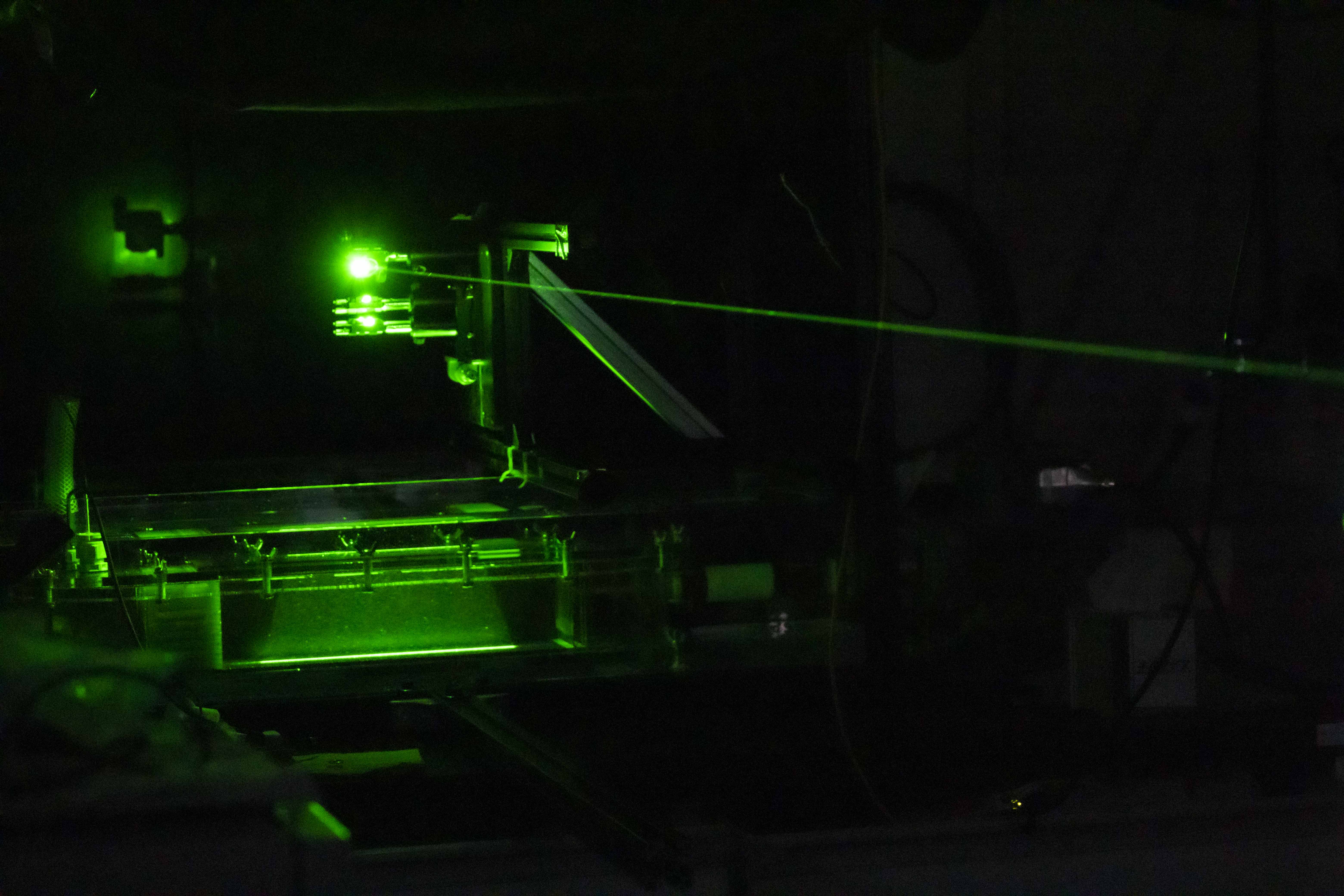
ADV・ADCP
ADV and ADCP are both equipment for measuring flow velocity using the Doppler effect of sound waves. The Acoustic Doppler Velocimeter (ADV) can measure small area flow velocities at high frequencies, while the Acoustic Doppler Current Profiler (ADCP) can measure flow velocities in multiple layers (typically in the vertical direction). While they are also used in laboratory experiments with recirculating flumes, they are primarily used in rivers and the ocean.
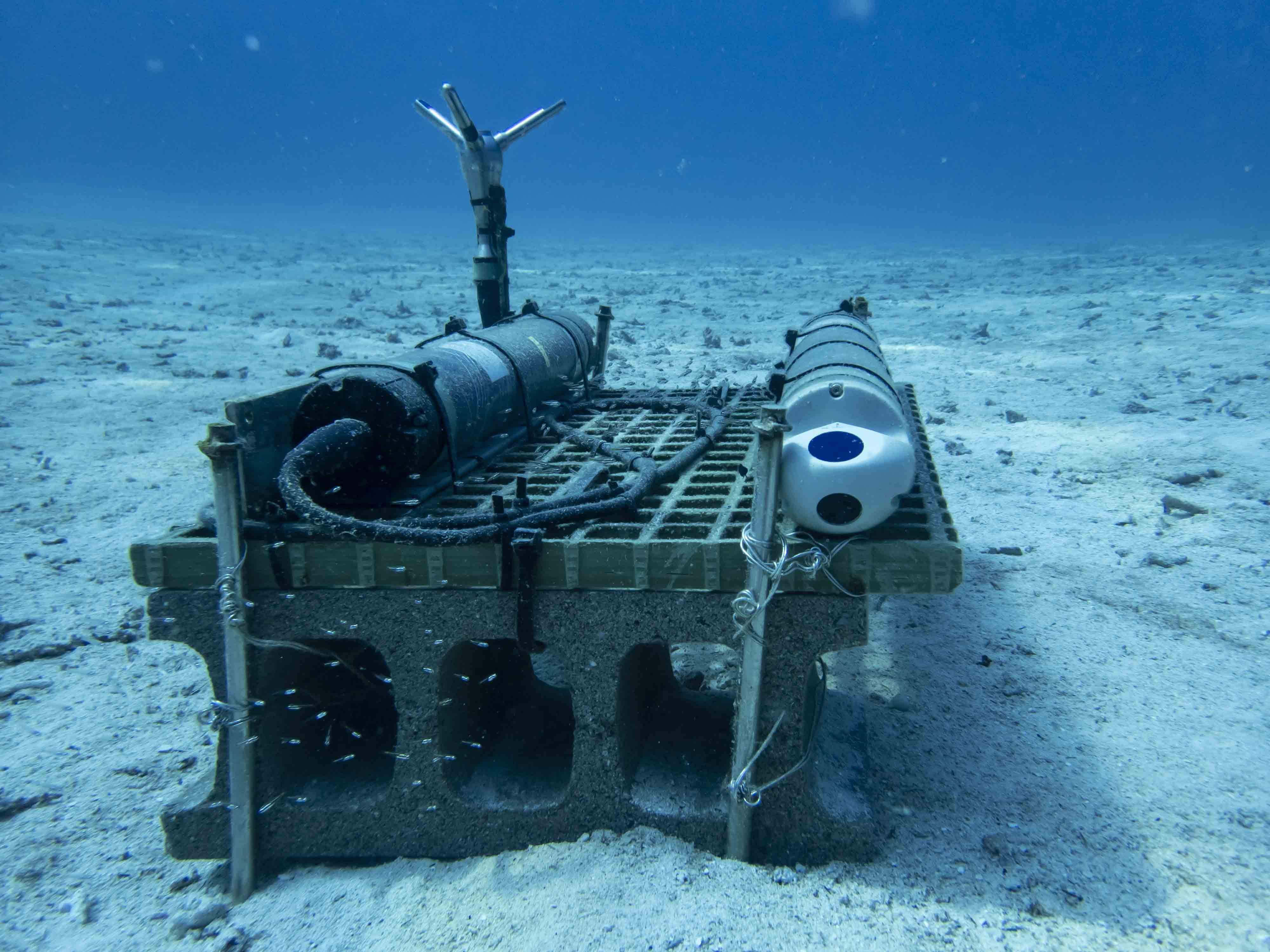
Analysis of flows
The obtained flow velocities are used to analyze turbulence parameters. The optimal analysis method varies depending on the measurement method, and complex time series data analysis methods such as spectral analysis using Fourier transform are sometimes required.

Behavior
Tracking behavior
In current research, the tracking of animal behavior is based on image data due to the size of the organisms. The Python package DeepLabCut, which utilizes deep learning to track the characteristic points of the body without markers, is used to perform automatic tracking.
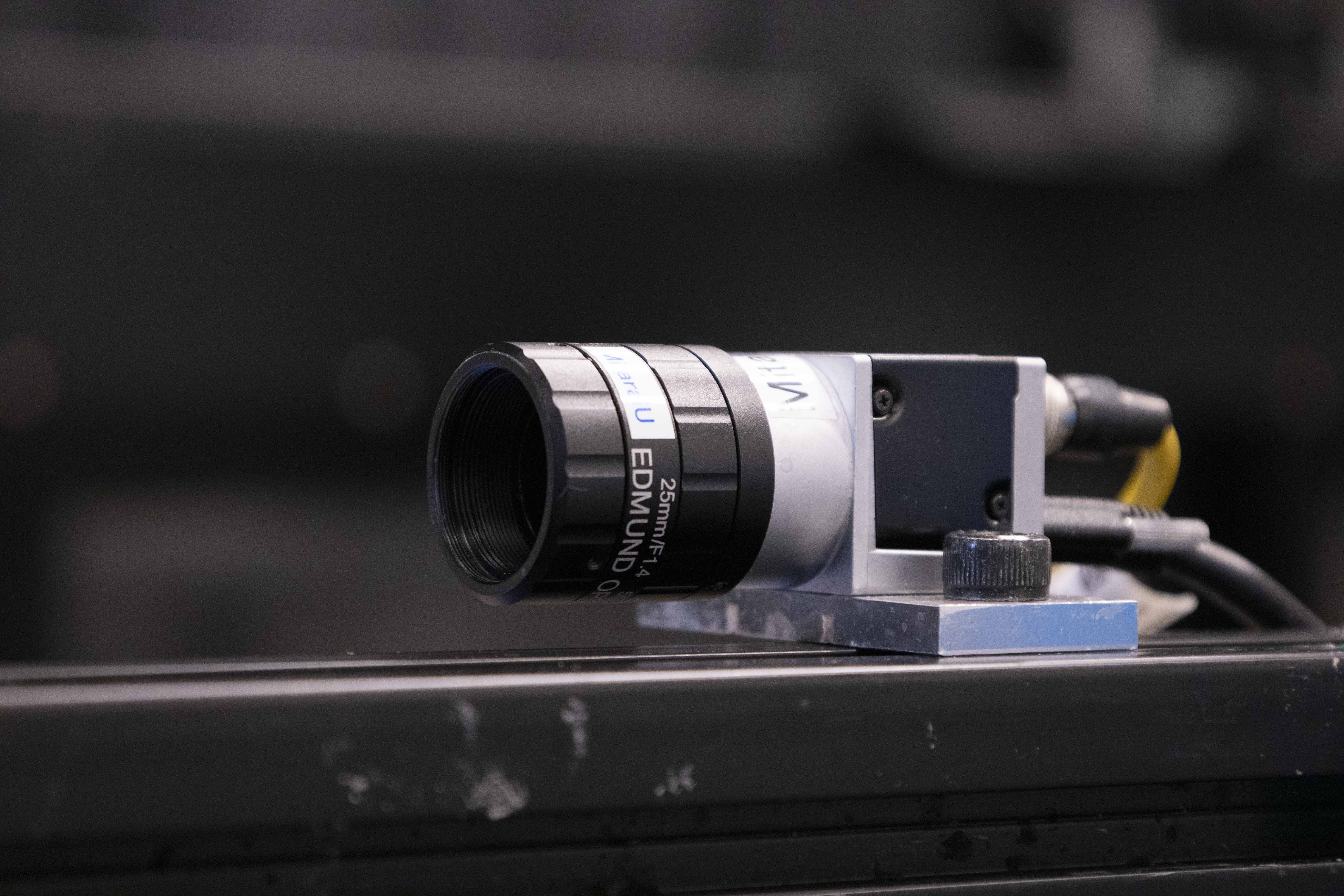
3D reconstruction
By obtaining the information on animal behavior tracking from multiple cameras and camera calibration information, we reconstruct the behavior in three dimensions using the DLT (Direct Linear Transformation) method. This allows for quantitative three-dimensional analysis of animal behavior.
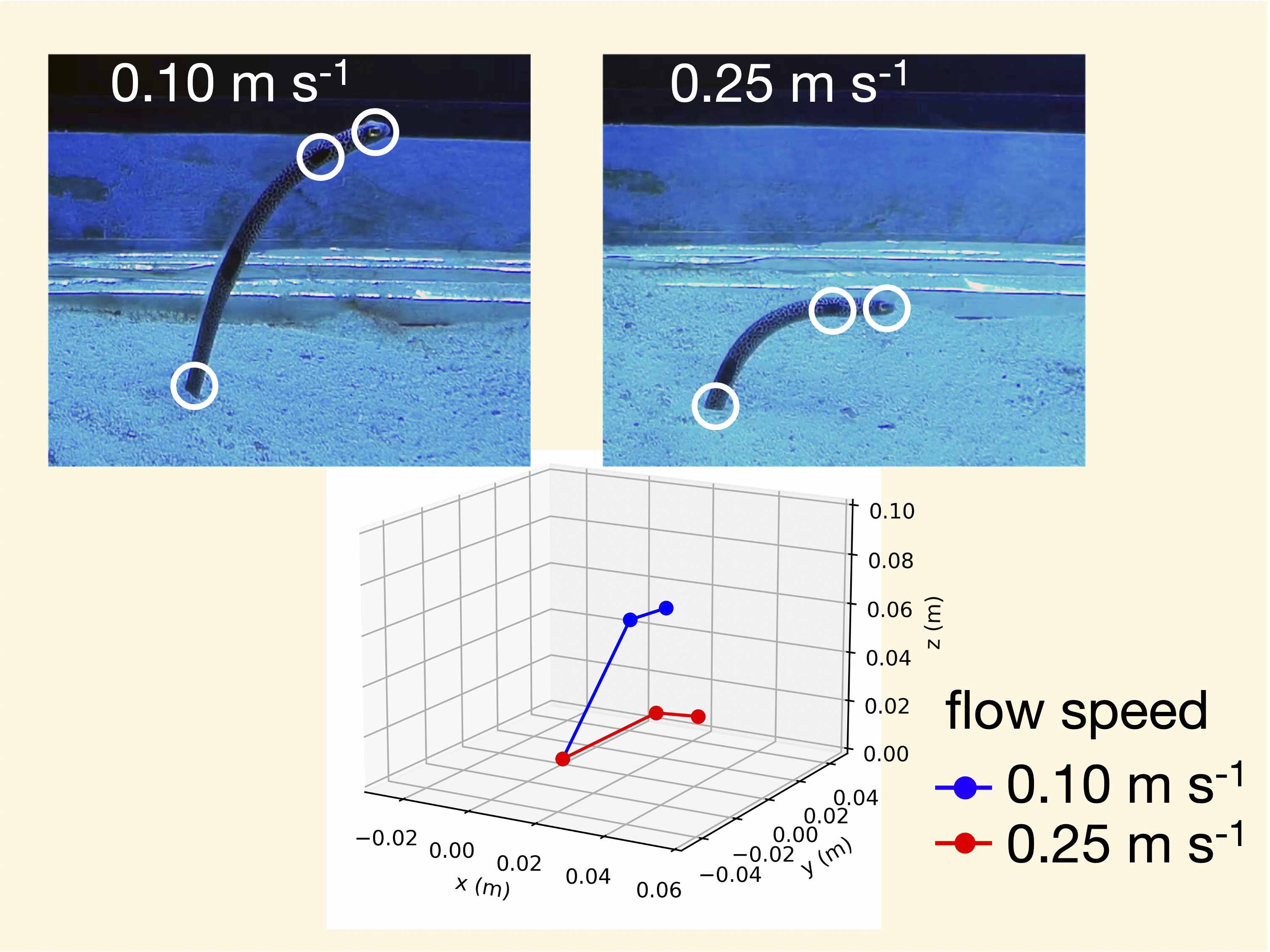
Behavioral analysis
Behaviors to be analyzed vary depending on the research objectives. In current research, the three-dimensional data described above is used to calculate acceleration, distance, and velocity of specific movements. In addition, careful consideration of lighting conditions and camera properties has also allowed for the capture of both plankton and fish movements on video, enabling analysis of the movements of both groups.
Metabolic measurement
Energy gain
By investigating the feeding rate, which indicates how much food is consumed per unit of time under certain conditions, the energy obtained from feeding can be calculated based on information about the energy content of the food and the metabolic efficiency of the predator. In my research, a novel approach was used in which the moment when food enters the mouth of a fish was captured by a camera and the number of occurrences was counted to calculate the feeding rate.
Energy cost
By investigating oxygen consumption under certain conditions, we estimate the minimum amount of basal metabolism necessary for the maintenance of life. In this research, a recirculating flume was used to measure oxygen consumption by estimating the oxygen concentration using an oxygen sensor.
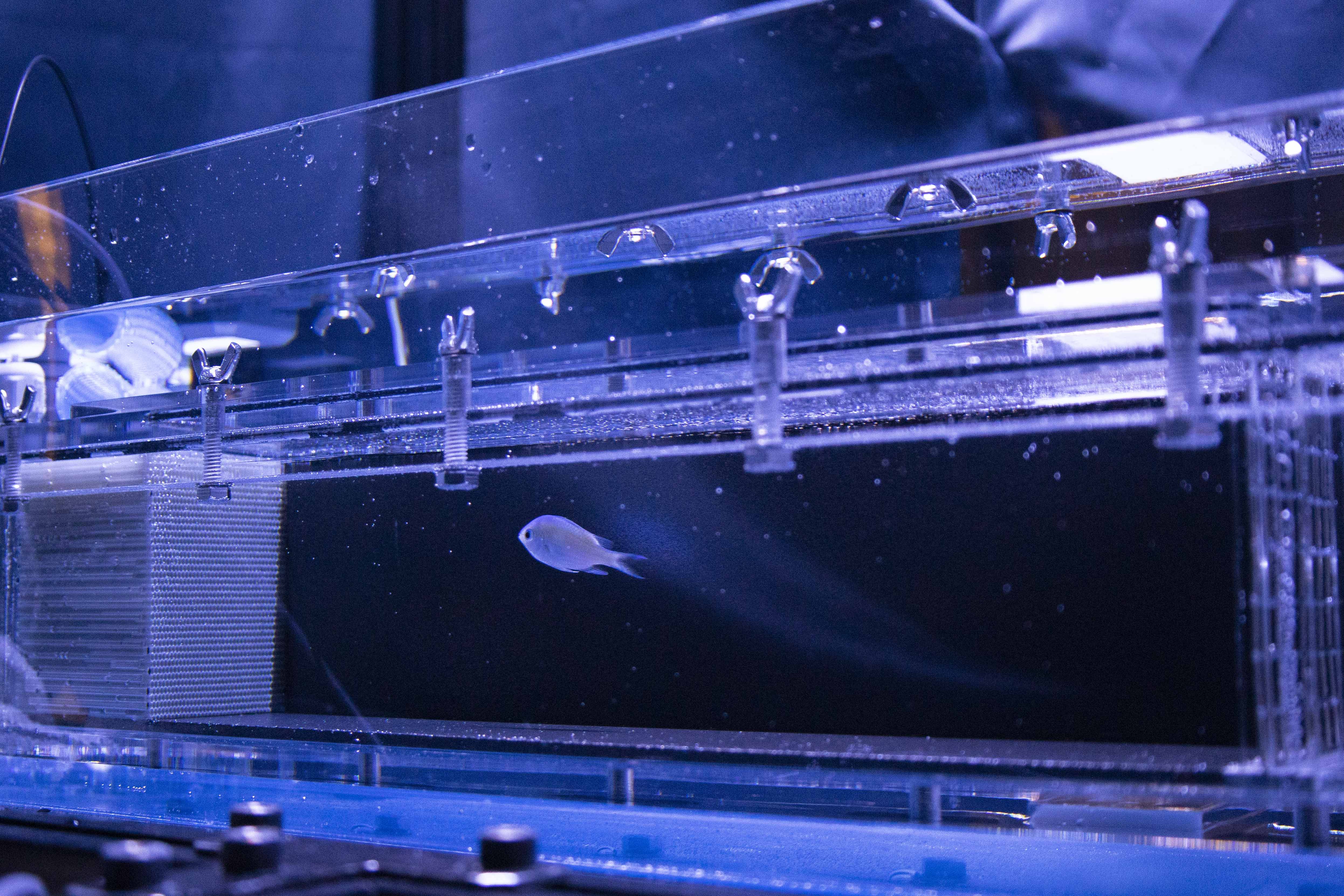
Others
Here, I introduce other skills and techniques that I used in the previous research.
Spectrogram recognition by CNN
I created an image recognition program using a convolutional neural network (CNN), a type of deep learning. By training the network, I successfully extracted the sound data that includes sound from a specific species from vast amount of spectrograms (frequency spectrum analysis of sound data, also known as a vocal fingerprint).
Molecular biological techniques
Basic techniques used to conduct research on genes and proteins. These techniques include gene cloning, gene expression and protein evaluation (SDS-PAGE, Western blotting, protein activity evaluation through cell proliferation, etc.) in Escherichia coli and animal cells, qRT-PCR, protein purification using high-performance liquid chromatography (HPLC), and proteomics using mass spectrometry.
Histological and cytological techniques
Basic techniques used to conduct research on living organisms, tissues, and cells, such as tissue section preparation, tissue staining, immune fluorescent staining, cell culture, and flow cytometry.
